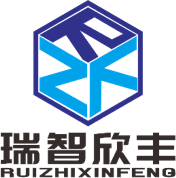The main difference between HDI and ordinary PCB - a new era of high-density interconnection
HDI (High Density Interconnection) is a compact circuit board designed for low-volume users. Compared with ordinary PCBs, the most significant feature of HDI is its high wiring density. The difference between the two is mainly reflected in the following four aspects.
1.HDI is smaller and lighter in weight
HDI boards are made of traditional double-sided boards as core boards and are laminated by continuous lamination. This kind of circuit board made by continuous lamination is also called a Build-up Multilayer board (BUM). Compared with traditional circuit boards, HDIs have the advantages of being "light, thin, short, and small".
The electrical interconnection between HDI board layers is realized through conductive through- hole, buried/blind via connections. Its structure is different from ordinary multi-layer circuit boards. A large number of micro-buried/blind vias are used in HDI boards. HDI uses laser direct drilling, while standard PCB usually uses mechanical drilling, so the number of layers and aspect ratio are often reduced.

2.HDI motherboard production process
The high density of HDI boards is mainly reflected in the density of holes, lines, pads, and interlayer thickness.
Micro through-hole: The HDI board contains micro through-hole designs such as blind via, which is mainly reflected in the micro-hole forming technology with a diameter of less than 150um and the high requirements in terms of cost, production efficiency and hole position accuracy control.There are only through holes in traditional multi-layer circuit boards and there are no tiny buried/blind vias.
Refinement of line width/spacing: This is mainly reflected in the increasingly stringent requirements for line defects and line surface roughness. Generally, line width/spacing shall not exceed 76.2um.
High pad density: soldering contact density is greater than 50/cm2
Thinning of dielectric thickness: This is mainly reflected in the trend of inter-layer dielectric thickness to 80um and below, and the requirements for thickness uniformity are becoming more and more stringent, especially for high-density boards and packaging substrates with characteristic impedance control
3.The electrical performance of HDI board is better
HDI not only enables end product designs to be more miniaturized, but also meets higher standards for electronic performance and efficiency.
The increased interconnect density of HDI allows for enhanced signal strength and improves reliability. In addition, HDI boards have better improvements in RF interference, electromagnetic wave interference, electrostatic discharge, heat conduction, etc. HDI also uses full digital signal process control (DSP) technology and a number of patented technologies, with full range payload adaptability and strong short-term overload capability.
4.HDI boards have very high requirements for buriedvia plugging.
Whether it is the size of the board or the electrical performance, HDI is superior to ordinary PCB. Every coin has two sides. The other side of HDI is that as it is manufactured as a high-end PCB, its manufacturing threshold and process difficulty are much higher than that of ordinary PCBs. There are also many issues that need to be paid attention to during production - especially buried via plugging.

At present, the core pain point and difficulty in HDI manufacturing is buried via plugging. If the HDI buried via is not plugged properly, major quality problems will occur, including uneven board edges, uneven dielectric thickness, and pitted pads, etc.
The board surface is uneven and the lines are not straight, causing beach phenomenon in the depressions, which may lead to defects such as line gaps and disconnections.
Characteristic impedance will also fluctuate due to uneven dielectric thickness, causing signal instability.
The unevenness of the soldering pad will lead to poor quality of subsequent packaging and consequential losses of components.
Therefore, not all PCB manufacturers have the ability and strength to do a good job on HDI. With over 20 years experience in PCB manufacturing, RICHPCBA provides the latest printed circuit board manufacturing technologies and highest quality standards for electronics industry. Products including: 1-68 layers PCB, HDI, multilayer PCB, FPC, rigid pcb, flex pcb, rigid-flex pcb, ceramic pcb, high frequency pcb, etc. Choose RICHPCBA as your reliable PCB manufacturer in China .








